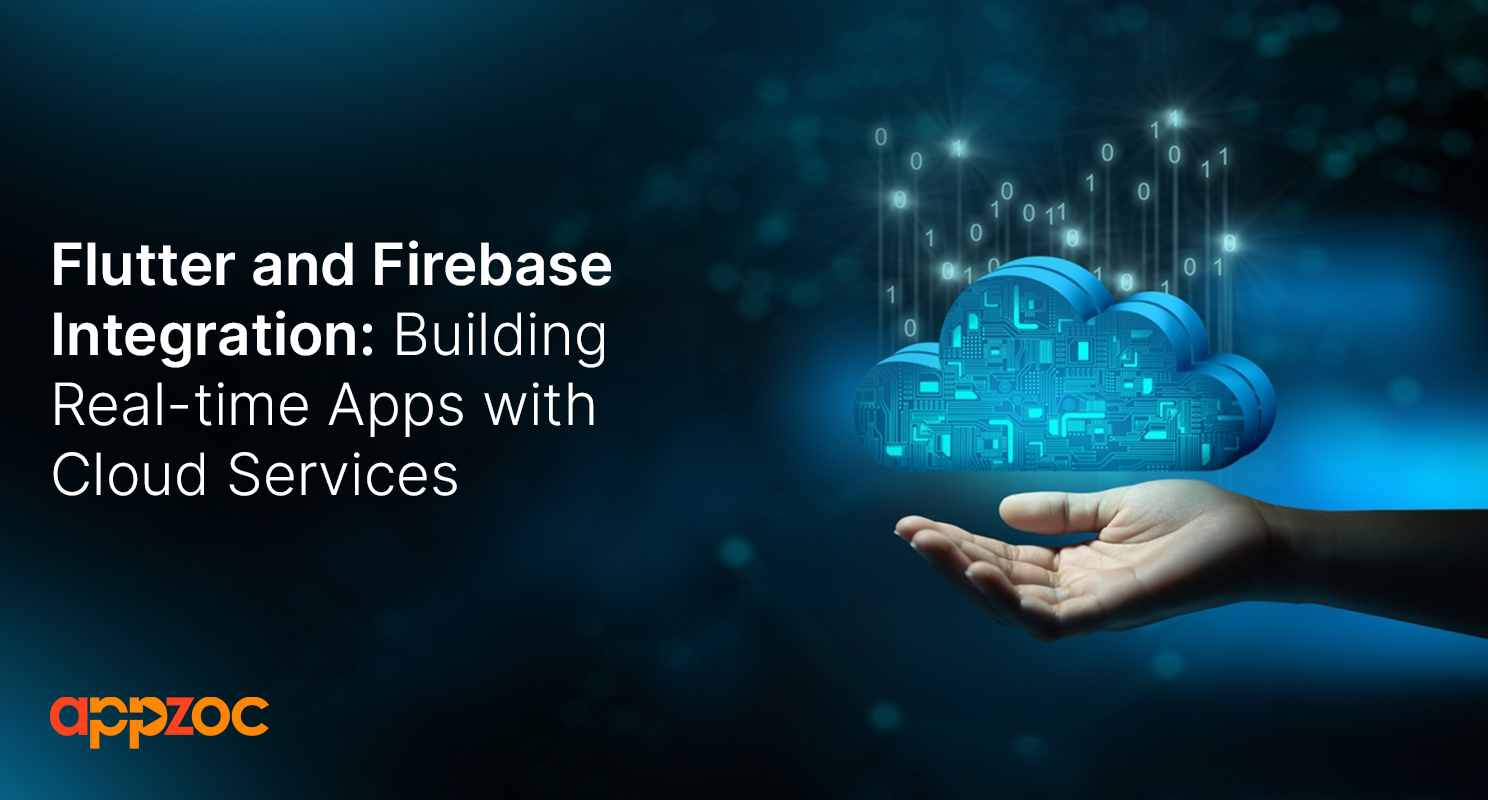
Flutter
Make the most of this cutting-edge technology by developing apps quickly! Our Flutter solutions have amazing features that can be used to create sleek, high-performance apps that can scale seamlessly across platforms.

In today’s digital era, building apps with real-time data and cloud integration has become extremely crucial. Flutter, Google’s popular open-source app development framework, offers an efficient way to build beautiful natively compiled apps for multiple platforms including iOS, Android, Web and Desktop from a single codebase.Combining Flutter with Google’s Firebase backend-as-a-service (BaaS) platform opens up powerful capabilities for developers to easily incorporate real-time data syncing, cloud messaging, authentication and more in their mobile and web apps.
In this comprehensive guide, we will explore how Flutter developers can harness the full potential of Firebase services by deeply integrating them in their apps. Whether you are looking to develop highly dynamic and interactive apps with data syncing capabilities or add scalable cloud functions to your app backend, Flutter and Firebase make an extremely robust technology stack. Let’s dive in!
Flutter is Google’s open source toolkit for building beautiful, high performance cross platform mobile, desktop and web applications from the same Dart codebase. It offers lightning-fast UI rendering through rich inbuilt widgets and high customizability.
Firebase, also by Google, is a BaaS solution that provides services like realtime database, cloud messaging, authentication, crashlytics, storage and more to accelerate app development without managing backend infrastructure. It offers SDKs for easy integration with client apps.
The powerful combination of Flutter and Firebase allows developers to build fully-featured and scalable apps at a rapid pace. While Flutter provides the modern UI framework and tools for crafting high quality app frontends, Firebase amply fulfills all backend requirements seamlessly.
There are several excellent reasons why Flutter and Firebase integration is extremely popular for full stack development:
Rapid App Development: Firebase SDKs greatly reduce backend coding needs, allowing faster launches. Flutter hot reload boosts UI creation velocity too.
Realtime Sync and Offline Support: Firebase database offers seamless data syncing capabilities across devices in realtime along with offline data persistence support.
Scalability: Firebase offers pay-as-you-go services that flexibly scale to accommodate growing app demands without infra provisioning needs.
Cross-platform Apps: Flutter compiles into native code for iOS and Android from the same base ensuring excellent native performance while Firebase consistently serves both platforms.
Authentication: Firebase Auth framework with email/password and social media login support allows securing Flutter apps readily.
Analytics and Crash Reporting Inbuilt analytics and monitoring helps track app usage metrics and identify issues faster.
With these integrated benefits, companies offering flutter app development services leverage Flutter and Firebase to build and launch beautiful cross-platform apps faster at scale.
Let us explore some of the most popular features developers can integrate in their Flutter apps using different Firebase tools:
Realtime Database
Firebase database uses intuitive JSON to store and sync app data across Android, iOS and web in real time. By incorporating it in Flutter apps, data can be seamlessly accessed and updated across connected clients. Useful for apps like messaging, live status tracking etc.
Cloud Storage
Store and serve multimedia like videos, images, documents etc without size limits at high speed and security. Great for apps with significant media usage like social platforms, shopping sites etc.
User Authentication
Firebase Auth enables implementing email/password and federated social media based secure user authentication flows with ease. Ideal for all apps that need user accounts like ecommerce, fintech and community apps.
Push Announcements
shoot targeted announcements to stoner parts to drive engagement using Firebase pall Messaging. Useful for news, shopping and numerous orders of apps.
Pall Functions
Run backend law in response to database changes, auth events, https triggers etc without managing waiters using Firebase functions. Perfect for apps demanding garçon capabilities.
These represent just some of the amazing effects possible by integrating Firebase services in Flutter apps using simple system calls. The vacuity of prebuilt factors makes structure point rich flutter apps presto.
Also Read:Flutter Advantages For Mobile App Development
1. Integrating Firebase services like database, authentication, messaging etc into Flutter apps involves a many easy way
2. Add firebase packages Import necessary firebase packages
3.likefirebase_core,firebase_database etc in pubspec train.
4. iOS/ Android configuration Download GoogleService- Info configs for each platform from Firebase and add to native design directories.
5. Initialize the app CallFirebase.initializeApp() to initialize firebase SDK.
6.Add sign- heft system Enable sign- in providers like dispatch, Google, Facebook from Firebase press.
7. Use asked services Make database reads writes, check auth state etc with simple intuitive SDK styles.
For detailed law samples, relate Firebase Flutter croakers
. With brief dev setup, robust flutter apps can work the full array of cross-platform backend capabilities offered by Firebase.
The flawless flutter and firebase integration opens up an instigative range of possibilities for inventors to make all kinds of apps empowered by Google’s mobile backend. Let us consider some illustration use cases
Messaging App
A completely- featured yet simple messaging platform can be erected using Flutter UI frame combined with Firebase realtime database for incontinently syncing across bias and druggies. Authenticating druggies with Firebase Auth, storing multimedia dispatches on Cloud Storage and transferring announcements with FCM further enriches the app.
Ecommerce Marketplace
For erecting a scalable online business, Flutter handles the visually rich shopping experience while Firebase provides stoner authentication, hosts product images on Storage, runs deals on database along with functions to reuse orders and payments.
Mobile Learning Platform
Creating custom Flutter UI defenses for course content while syncing progress in Firebase database allows erecting a rich mobile literacy app. stoner biographies, course metadata and multimedia can live on pall while analytics track operation.
IoT Home robotization App
For controlling smart appliances, Flutter can render stoner friendly mobile interfaces linked to firebase database that stores device configs and realtime status data while pall functions execute robotization commands.
These demonstrate the versatility of Flutter apps integrated with Firebase services in different disciplines like messaging, business, education, IoT etc. The composable factors feed to generally demanded capabilities.
Flutter’s movable UI frame combined with Firebase’s mobile backend services produce a redoubtable technology combination for structure and launching full- featured apps briskly across iOS, Android and web. Integrating both unlocks capabilities like realtime data sync, stoner authentication, pall storehouse, announcements and further using simple SDK system calls.
For companies offering flutter app development services in major tech capitals like Bangalore, using Flutter and Firebase allows delivering excellent cross platform apps briskly to guests. With Google continuously evolving both these inventor products, they promise to remain largely applicable for the global app dev ecosystem for times ahead.